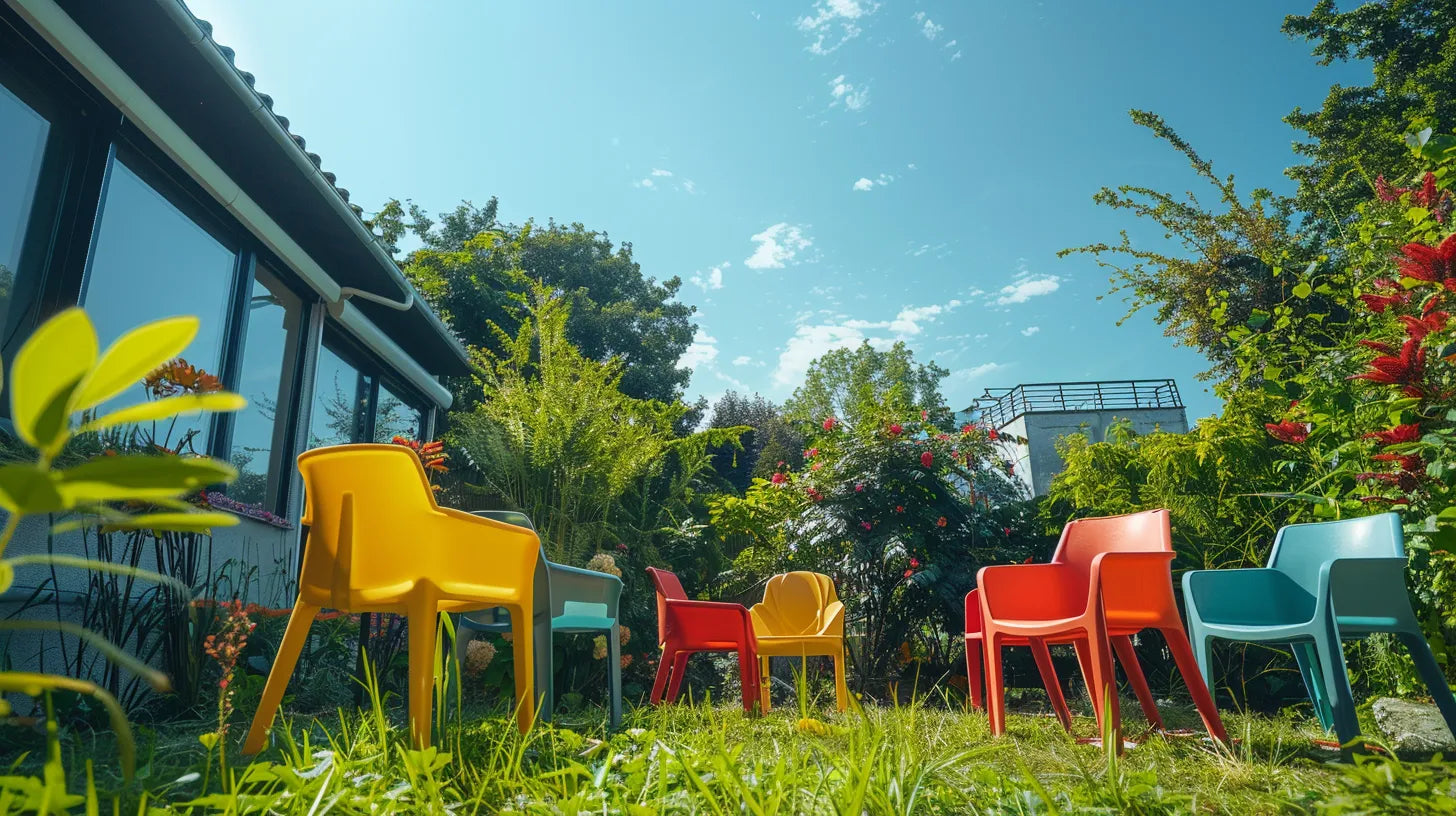Plastic patio furniture, particularly those made from high-density polyethylene (HDPE) and polypropylene, offer remarkable durability and weather resistance , suitable for various outdoor conditions. These materials, combined with UV-resistant additives and stainless steel hardware , guarantee both longevity and aesthetic appeal. Manufacturing processes like injection and rotational molding enhance these qualities, embedding strength right from the production phase. To maintain this furniture, routine cleaning with mild soap and routine inspections for any loose screws are recommended. Protective measures such as using covers and UV protectant sprays can further extend their lifecycle. Discover further insights on optimizing the sustainability of your outdoor furnishings.
Importance of Material Selection
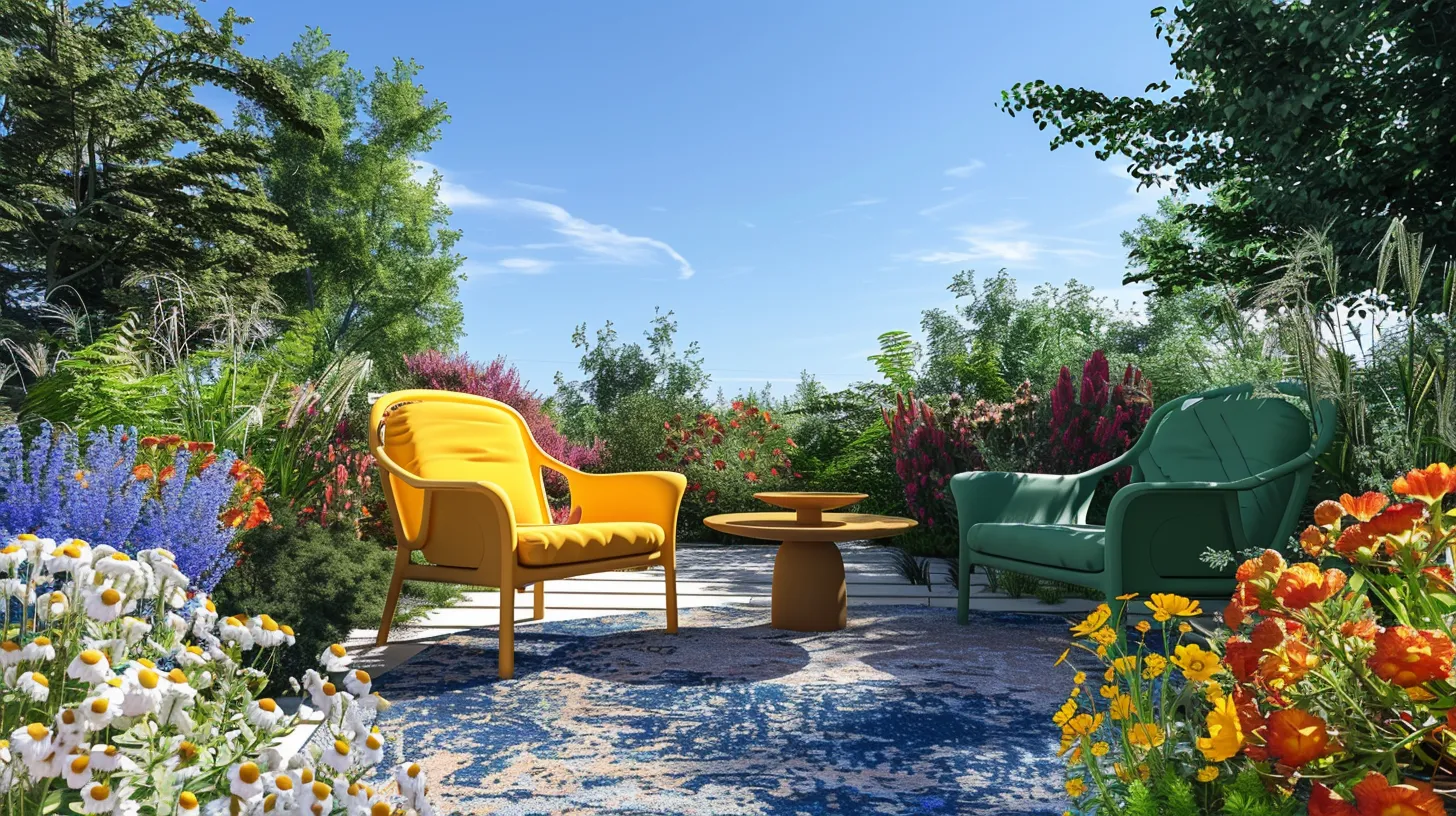
Selecting the appropriate plastic material is essential for guaranteeing the durability, sustainability, and aesthetic appeal of patio furniture. Materials like high-density polyethylene (HDPE) and polypropylene are renowned for their robustness and ability to withstand severe weather conditions , which is vital for outdoor environments . These plastics resist degradation from the sun's harsh UV rays, ensuring that the furniture retains its strength and color over time.
Furthermore, the integration of UV-resistant additives in plastic materials is a key factor in preventing the premature fading and cracking of patio furniture. This preservation of color vibrancy is not only important for aesthetic reasons but also for minimizing the frequency of replacements, thereby promoting sustainability.
Additionally, the use of high-quality plastics combined with stainless steel hardware can significantly enhance the structural integrity and longevity of patio furniture. Options like polycarbonate provide a lightweight and transparent choice, maintaining excellent durability and offering UV protection. These characteristics help ensure that the furniture remains functional and visually appealing for years, making the selection of the right plastic materials a critical decision for consumers aiming to optimize their outdoor furniture investments.
Manufacturing Processes
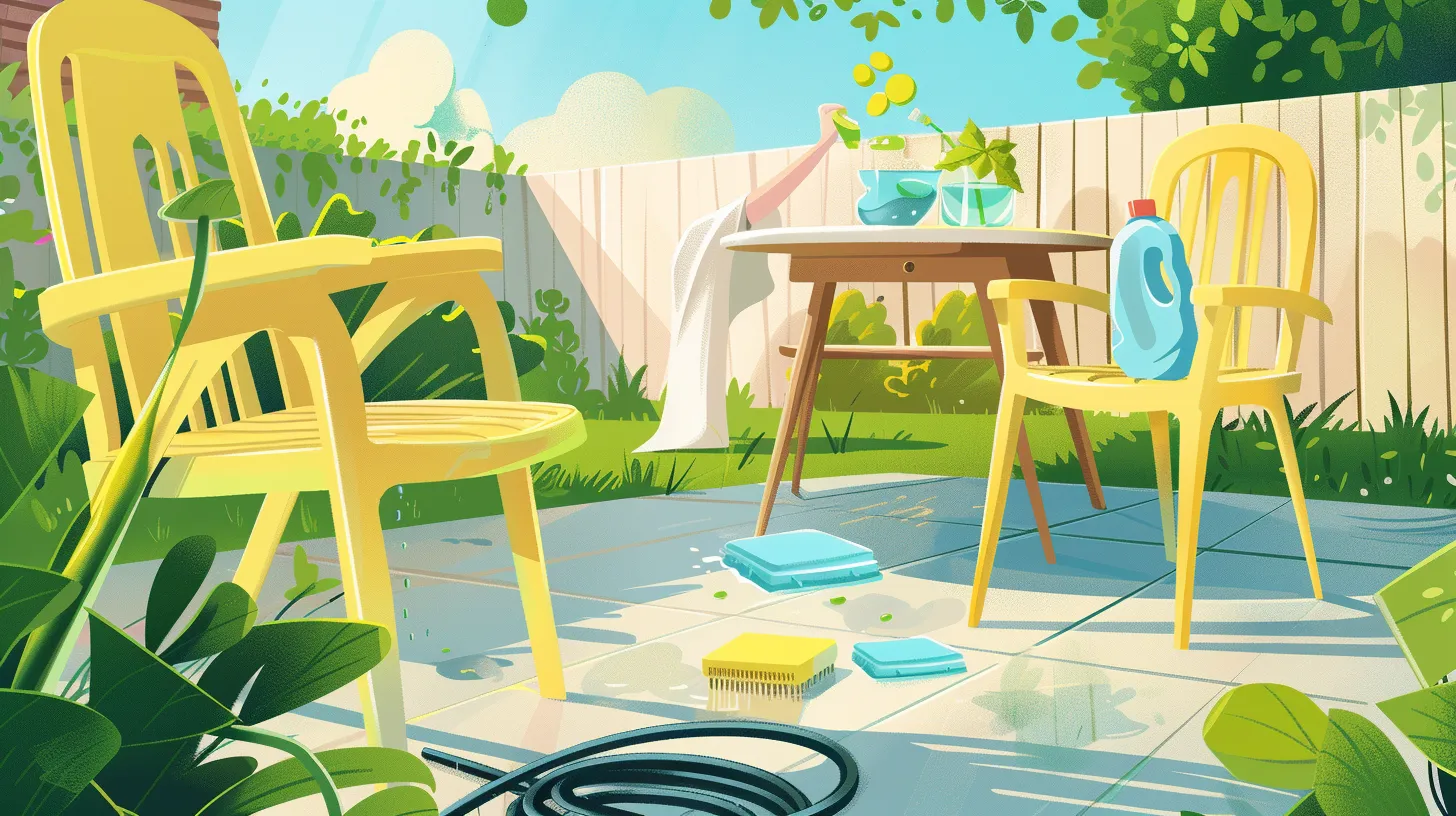
Having explored the importance of material selection, we now examine the manufacturing processes used to create plastic patio furniture. The primary techniques employed include injection molding and rotational molding , each serving distinct roles in the production cycle. Injection molding is favored for its ability to generate intricate designs rapidly, making it ideal for creating diverse shapes and decorative details in plastic furniture. This process involves injecting molten plastic into a pre-shaped mold, where it cools and solidifies into the final product.
Rotational molding, on the other hand, is used to produce seamless items that boast uniform thickness and enhanced durability . This method involves slowly tumbling the mold in an oven while plastic resin gradually coats the interior, forming strong, hollow pieces upon cooling. Both processes utilize sophisticated molds, precise heating elements, and cooling systems to secure the desired quality and finish of the furniture.
Furthermore, during these manufacturing processes, additives such as UV stabilizers are incorporated into the plastic material. These additives are critical for prolonging the life of the furniture by preventing degradation and color fading due to prolonged sun exposure, thereby enhancing the overall durability and aesthetic appeal of the plastic furniture.
Maintenance Best Practices

To guarantee the longevity and aesthetic appeal of plastic patio furniture , regular maintenance is essential. Engaging in routine cleaning with mild soap and water helps remove accumulated grime and preserve the furniture's vibrant look. It's important to avoid harsh chemicals or abrasive cleaners, which can deteriorate the plastic material over time, leading to brittleness and discoloration.
Additionally, regular inspections should be conducted to tighten any loose screws or fasteners, ensuring the furniture maintains its structural integrity . This not only prevents accidental damage but also extends the furniture's usable life by keeping it stable and secure.
For those living in areas with severe weather conditions , taking proactive steps to protect your plastic patio furniture is advisable. Storing pieces indoors or using protective covers during periods of extreme cold, heat, or precipitation can greatly prolong their lifespan.
One of the most effective maintenance practices includes the application of a UV protectant spray . This product forms a barrier that helps shield the plastic from the sun's harmful ultraviolet rays , preventing fading and maintaining the material's resilience against weathering. Implementing these maintenance strategies will make sure that your plastic patio furniture remains appealing and durable for years to come.
Advantages of UV-Resistant Plastics
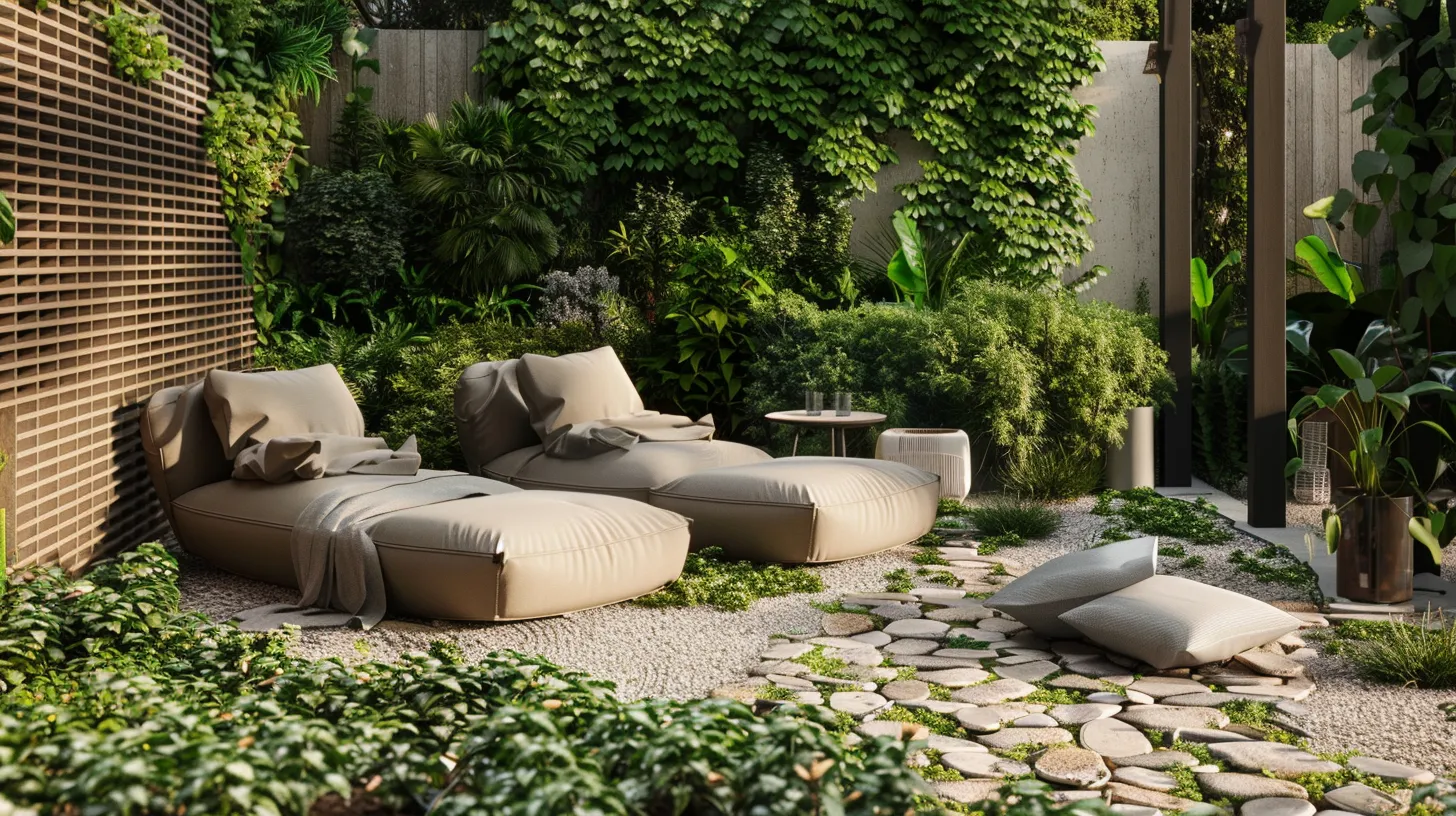
UV-resistant plastics offer significant benefits for patio furniture, primarily by preventing color fading and material degradation due to sun exposure. These specially formulated materials are designed to endure the harsh conditions of outdoor environments , where prolonged exposure to UV rays can compromise both the aesthetic and structural integrity of traditional plastics. By incorporating UV-resistant properties , these plastics guarantee that patio furniture retains its color vibrancy and strength over time.
In sunny or high-exposure areas , the use of UV-resistant plastics in patio furniture is particularly advantageous. It not only extends the lifespan of the furniture but also reduces the need for frequent replacements or repairs. This durability is essential for maintaining the appearance and functionality of outdoor spaces, where furniture is continuously subjected to environmental stressors .
Choosing UV-resistant plastics for patio furniture is a strategic decision for any homeowner or commercial entity looking to invest in long-lasting, low-maintenance outdoor furnishings. These materials stand up to the rigors of outdoor environments, ensuring that the furniture remains vibrant and durable, effectively supporting the sustainable use of resources in patio furniture manufacturing.
Environmental Benefits of Recycled Plastics
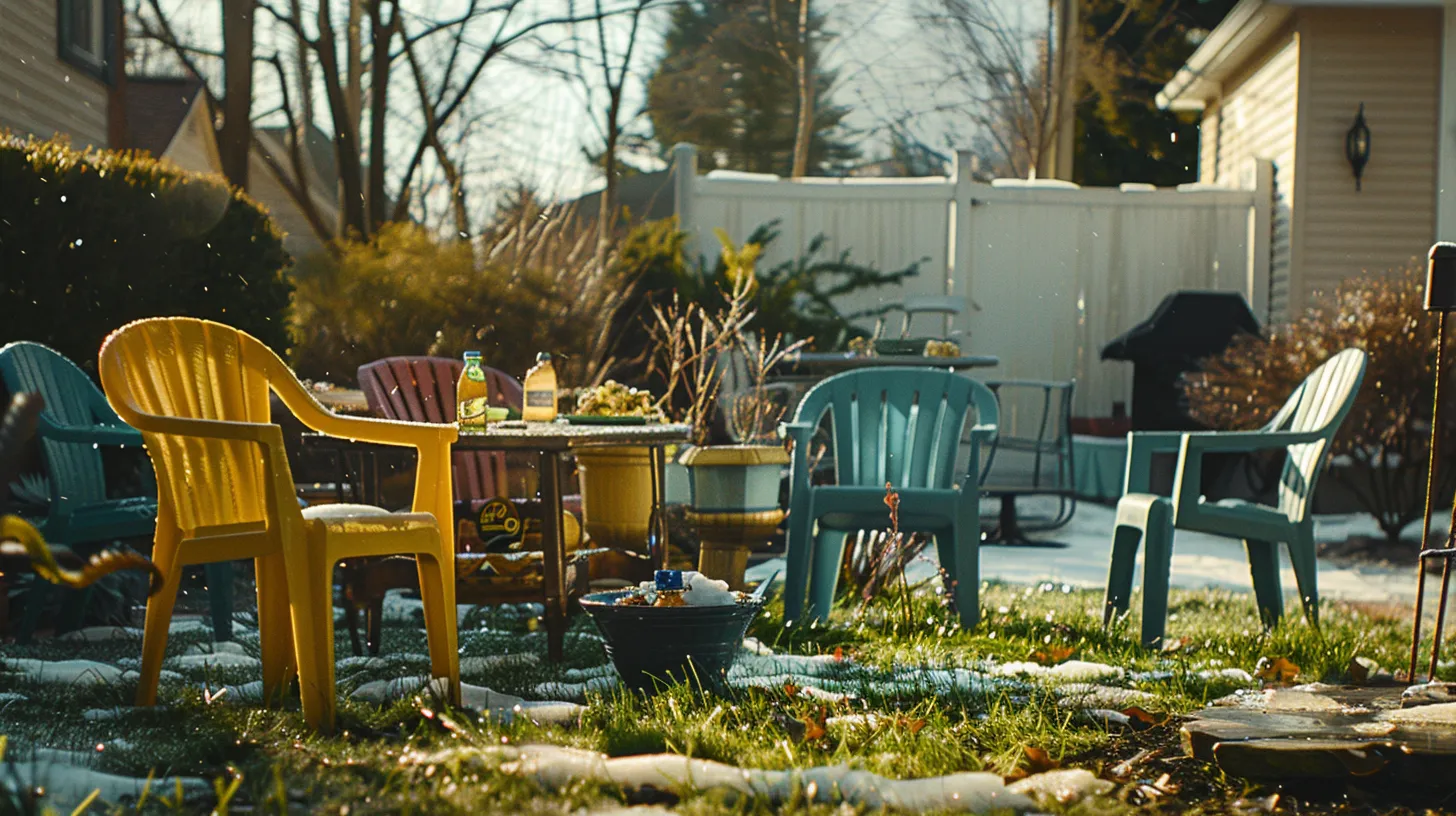
Recycled plastics offer considerable environmental advantages when used in the manufacturing of patio furniture, particularly by reducing the overall carbon footprint . Utilizing recycled materials not only helps divert waste from landfills but also decreases the demand on virgin resources , which are often depleted through traditional manufacturing processes. This approach aligns with principles of sustainability by promoting the reuse of resources in a manner that is less taxing on the environment.
The production of patio furniture using recycled plastics significantly conserves natural resources and reduces energy consumption compared to new plastic synthesis. This conservation is important for environmental preservation, as it minimizes the ecological impact associated with raw material extraction and processing. Additionally, recycled plastic furniture plays an important role in supporting a circular economy . This economic model emphasizes the importance of resource efficiency and aims to extend the lifecycle of materials.
Durability and Weather Resistance
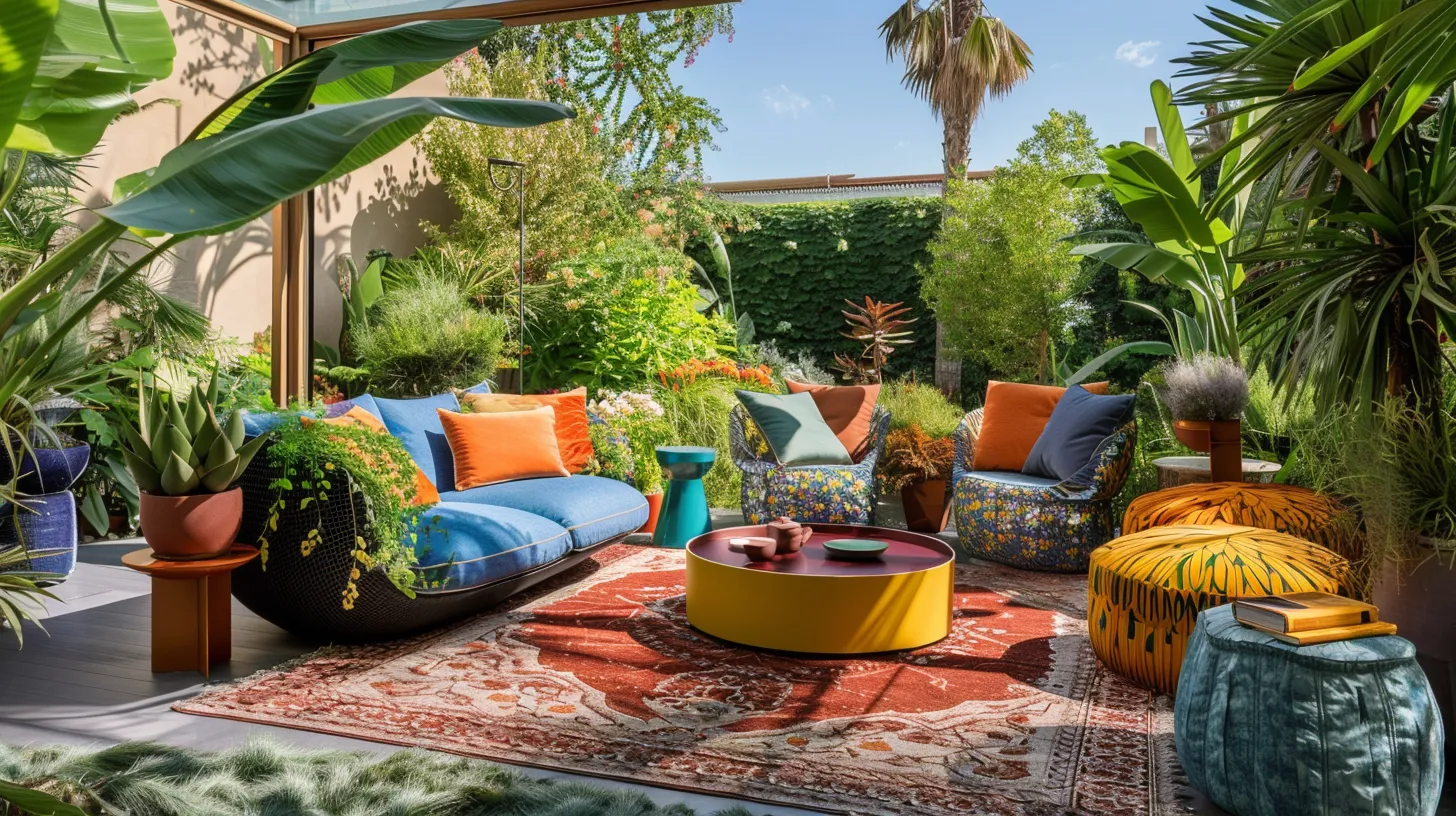
Plastic patio furniture, particularly those made from HDPE or polypropylene , excels in durability and possesses intrinsic weather-resistant qualities that guarantee its longevity and appeal over time. These materials have been specifically selected for their ability to withstand harsh environmental conditions. This resilience is important for furniture that is frequently exposed to fluctuating outdoor climates.
The weather-resistant properties of HDPE and polypropylene make sure that the furniture does not degrade from exposure to moisture, extreme temperatures, or direct sunlight. Additionally, manufacturers enhance these properties by incorporating UV protection additives into the plastic. These additives play a significant role in preventing the color fading and material warping that can occur with prolonged UV exposure. As a result, the furniture maintains its aesthetic appeal and structural integrity over a longer period, without the need for frequent replacements.
When selecting plastic patio furniture, it is essential to take into account these characteristics. Opting for pieces made with UV-stabilized HDPE or polypropylene can greatly increase the usability and lifespan of outdoor furnishings . Moreover, regular maintenance, such as periodic cleaning and protective storage during severe weather, can complement these materials' durability, ensuring that the furniture remains a long-lasting investment .
Cost-Effectiveness Analysis
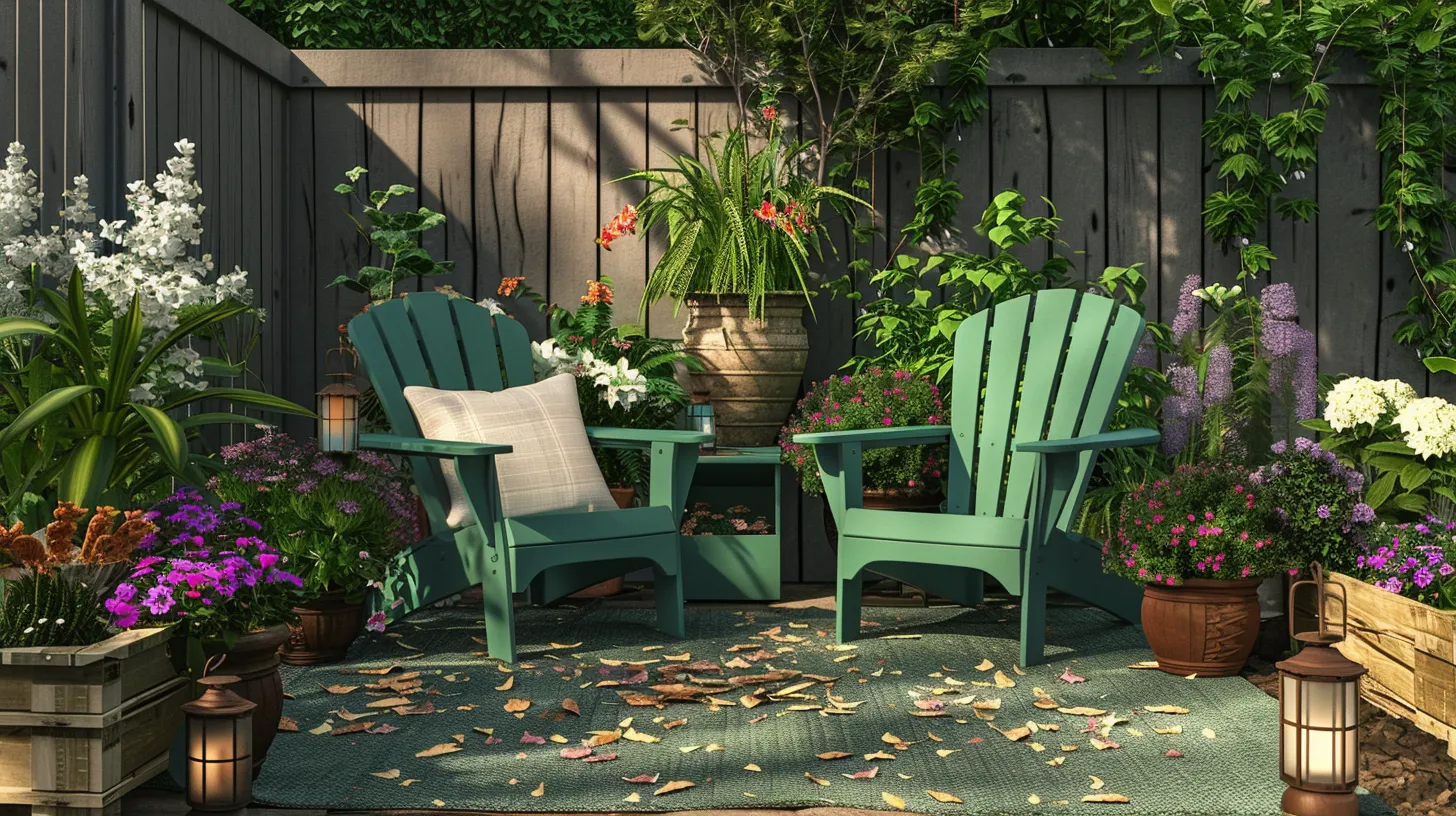
Beyond the robustness and weather resilience of HDPE or polypropylene furniture , its cost-effectiveness is another compelling factor worth exploring when evaluating options for outdoor seating and tables. Plastic patio furniture, known for its affordability , offers significant economic advantages right from the purchase. The low initial cost of plastic furniture makes it an attractive option for budget-conscious consumers looking to furnish their outdoor spaces without compromising quality.
In addition, the minimal maintenance requirements of plastic furniture further emphasize its cost-effectiveness. Unlike wood or metal furniture, plastic does not require repainting or treatment against rust and decay, which are common in harsh weather conditions. This resistance not only prolongs the furniture's lifespan but also minimizes ongoing costs related to upkeep.
The longevity of plastic furniture also plays an important role in its cost-effectiveness. Due to its durable nature , plastic furniture seldom needs frequent replacements, reducing the total cost of ownership over time. Moreover, opting for recycled plastic patio furniture can enhance both cost savings and environmental sustainability , providing a double benefit.
Considering these factors, plastic patio furniture emerges as a cost-efficient choice that withstands harsh weather conditions while offering sustained usability and minimal financial strain over its extended lifespan.
Styling Your Outdoor Space
When designing an outdoor area, integrating plastic patio furniture with the overall theme of your home guarantees a harmonious and appealing aesthetic. Styling your outdoor space should not only reflect a visual charm but also promote functionality and comfort . Choosing plastic patio furniture that complements your home's architecture and color scheme adds a seamless extension to your living space, making it both inviting and stylish.
To enhance the styling of your outdoor space, consider the specific activities you envision there. Whether hosting gatherings, enjoying family meals, or relaxing alone, select pieces that support these functions. Opt for cozy, ergonomic seating to foster relaxation and social interaction. Adding accessories such as vibrant cushions , protective umbrellas, and stylish covers not only boosts the aesthetic appeal but also enhances the comfort level of your plastic patio furniture.
Moreover, maintaining a neat appearance is essential for preserving the allure of your styled outdoor space. Regularly follow the maintenance instructions provided by manufacturers. This ensures that your furniture remains durable and visually pleasing , keeping your outdoor space attractive and welcoming throughout the seasons.
Long-Term Sustainability Tips
To ensure the longevity and aesthetic appeal of your plastic patio furniture, adopting proactive maintenance strategies is vital. Regular cleaning is essential; dirt and grime can degrade materials over time, reducing the lifespan of outdoor furniture. Utilizing gentle cleaning agents and avoiding abrasive tools preserves the surface integrity of plastic patio furniture, ensuring it remains visually attractive and structurally sound .
Protective measures are also important for long-term sustainability . Shielding your furniture from extreme weather conditions by using covers or storing it indoors can prevent damage such as cracking and discoloration. This not only extends the life of your outdoor furniture but also reduces the need for frequent replacements, supporting sustainable consumption practices.
Additionally, mindful usage plays a significant role. Avoid overloading plastic chairs and tables to prevent stress and potential warping. Regular inspections for signs of wear or damage and addressing these issues promptly can avert the need for major repairs or replacements. Adhering to the manufacturer's care guidelines further enhances the durability and sustainability of your plastic patio furniture, making it a lasting component of your outdoor living space.


